Search
Did you mean: Constantine I?
Search Results
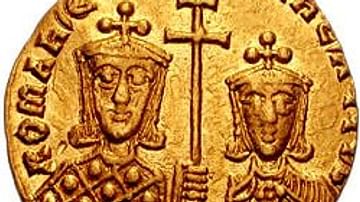
Image
Constantine VII & Romanos II
A gold Byzantine nomisma coin depicting Emperor Constantine VII (r. 945-959 CE) and his son and successor Romanos II (r. 959-963 CE).
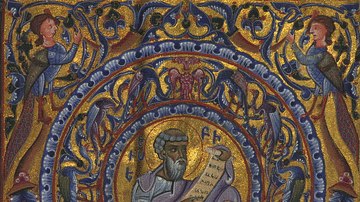
Article
Eusebius on Christianity
Eusebius Pamphili (aka Eusebius of Caesarea, 260-340 CE) was a Christian historian, exegete, and polemicist. He became the bishop of Caesarea Maritima in 314 CE and served as court bishop during the reign of Constantine I (r. 306-337 CE...
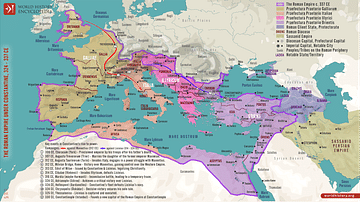
Image
Roman Empire under Constantine, 324-337 CE
This map illustrates Constantine I's (also known as Constantine the Great, c. 272-337 CE) rise to power, beginning with his proclamation as emperor by his troops in 306 CE and solidified through key military victories, including the Battle...
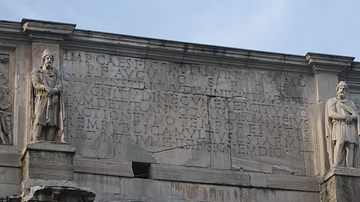
Image
Inscription, Arch of Constantine I
The inscription which appears on both sides of the Arch of Constantine I in Rome. Dedicated in 315 CE, the triumphal arch celebrates the emperor's victory over the Roman tyrant Maxentius in 312 CE. The inscription reads: IMP CAES FL CONSTANTINO...
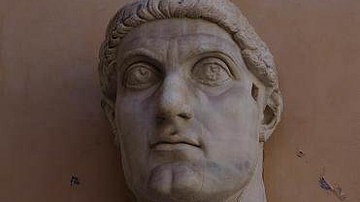
Image
The Colossus of Constantine
Once located in the west apse of the Basilica of Maxentius, fragments of the Colossus of Constantine are now located in the courtyard of the Palazzo dei Conservatori of the Musei Capitolini on the Capitoline Hill, Rome. Marble, 312 CE.
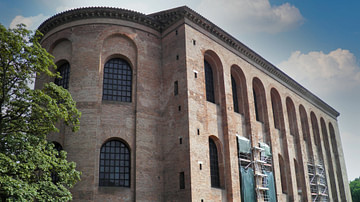
Image
Basilica of Constantine, Trier
The Basilica of Constantine (Aula Palatina) in Trier (Germany) was built around 310 CE by Constantine I (r. 306-337 CE) as the reception and throne room of the imperial palace . With an interior 67 metres (219 ft) long and 33 metres (108...
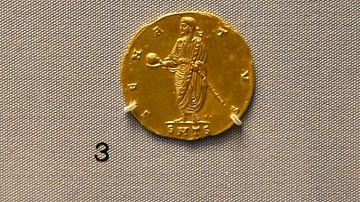
Image
Gold Medallion of Constantine the Great
Medallions with designs similar to coins could be worn as a symbol of allegiance, or given as prestigious gifts. They were specifically to be attractive, as display or presentation pieces. Gold medallion of the Roman Emperor Constantine I...

Definition
Constantinople
Built in the seventh century BCE, the ancient city of Byzantium proved to be a valuable city for both the Greeks and Romans. Because it lay on the European side of the Strait of Bosporus, the Emperor Constantine understood its strategic importance...
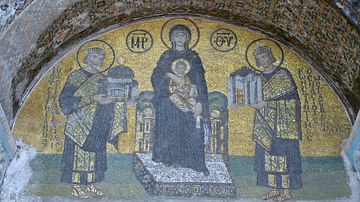
Image
Mosaic with the Virgin Mary, Constantine and Justinian, Hagia Sophia
Mosaic panel located at the southwestern entrance of the basilica Hagia Sophia (Istanbul) depicting the emperor Constantine I holding a model of the city of Constantinople (right), the emperor Justinian I holding a model of Hagia Sophia (left...

Image
Arch of Constantine I
The north side of the Arch of Constantine I in Rome. Dedicated in 315 CE, the triumphal arch celebrates the emperor's victory over the Roman tyrant Maxentius in 312 CE. It is the largest surviving triumphal arch and the last great Imperial...